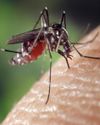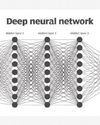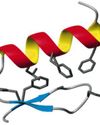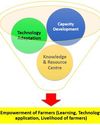Nanoparticle research is a fascinating branch of science. Nanoparticles are defined as particles with a diameter smaller than 100 nm, are increasingly used in different applications, including drug carrier systems and to pass organ barriers such as the blood-brain barrier. The strongly size-related properties of nanoparticles offer uncountable opportunities for surprising discoveries. Nanotechnology is helping to considerably improve, even revolutionize, many technology and industry sectors: information technology, homeland security, medicine, transportation, energy, food safety, and environmental science, and among many others. 20 importants facts about nanoparticles given below:

1. Naturally occurring nanoparticles include organic (proteins, polysaccharides, viruses, among others) as well as inorganic compounds (iron oxyhydroxides, aluminosilicates, metals, among others) and are produced by weathering, volcano eruptions, wildfires or microbial processes.
2. Nanoparticles were used by artisans as far back as Rome in the fourth century in the famous Lycurgus cup made of dichroic glass as well as the ninth century.
3.The therapeutic use of gold can be traced back to Chinese medical history in 2500 BC. 4. Swarna Bhasma and Roupya Bhasma is still used in the Indian ayurvedic and Unani medicine for rejuvenation, revitalization and for treating various diseases.
5.Michael Faraday in 1857 provided the first scientific description of the properties of nanoparticles in his famous paper “Experimental relations of gold (and other metals) to light”. This was probably the first rationalized report on the purposeful synthesis of colloidal gold nanoparticles.
6. The term colloid was coined by Thomas Graham (1861) for suspended particles in liquid medium and was categorized to be in the size range 1 nm to few micrometers.
Denne historien er fra November - December 2018-utgaven av Scientific India.
Start din 7-dagers gratis prøveperiode på Magzter GOLD for å få tilgang til tusenvis av utvalgte premiumhistorier og 9000+ magasiner og aviser.
Allerede abonnent ? Logg på
Denne historien er fra November - December 2018-utgaven av Scientific India.
Start din 7-dagers gratis prøveperiode på Magzter GOLD for å få tilgang til tusenvis av utvalgte premiumhistorier og 9000+ magasiner og aviser.
Allerede abonnent? Logg på

An insight into Chandipura virus in India
Recently lot of news regarding disease due to Chandipura virus has emerged in various newspapers/magazines. After reading the reports published it seems that thing is still brewing in the natures nest and it could affect mankind.

Why elephants never forget?
An elephant has a very large brain for its size and the 'temporal lobe' region responsible for memory is more developed with a greater number of folds - this results in powerful abilities to 'download' important survival data such as where to find food and water, and who is friend or foe.

Use of Algae for Wastewater Treatment Containing Heavy Metals
Wastewater treatment is a critical environmental issue particularly when it comes to the removal of heavy metals.

Nano priming Seeds: A Small Innovation Sparkling Big Advances in Germination
Nanopriming is an emerging agricultural technique where the seeds are treated with nanoparticles to improve their germination, growth, and overall performance.

Nobel Laureates in Physics 2024: Revolutionizing AlThe Physics Foundations Behind Machine Learning
This year's two Nobel Laureates in Physics have used tools from physics to develop methods that are the foundation of today's powerful machine learning.

Revolutionizing Biology: The 2024 Nobel Prize in Chemistry Celebrates Breakthroughs in Protein Design and Structure Prediction
The Nobel Prize in Chemistry 2024 is about proteins, life's ingenious chemical tools.

New findings on animal viruses with potential to infect humans
Scientists investigating animal viruses with potential to infect humans have identified a critical protein that could enable spillover of a family of organisms called arteriviruses.

Father-Daughter Team Decodes Mars' Alien Signal
There is no definitive answer to whether aliens exist, but there is a lot of work being done to find out:

Krishi Vigyan Kendras: Working for Farmer's Welfare
Krishi Vigyan Kendras (Farm Science Centres) are the District level institution serving as an agriculture knowledge resource & capacity development centre which plays indispensable role in front line extension regarding agriculture system in scientific way.

Sixth generation Computer: The future computing technology
We are in a transition towards a digital world, where everything will be dealt with in digital format.